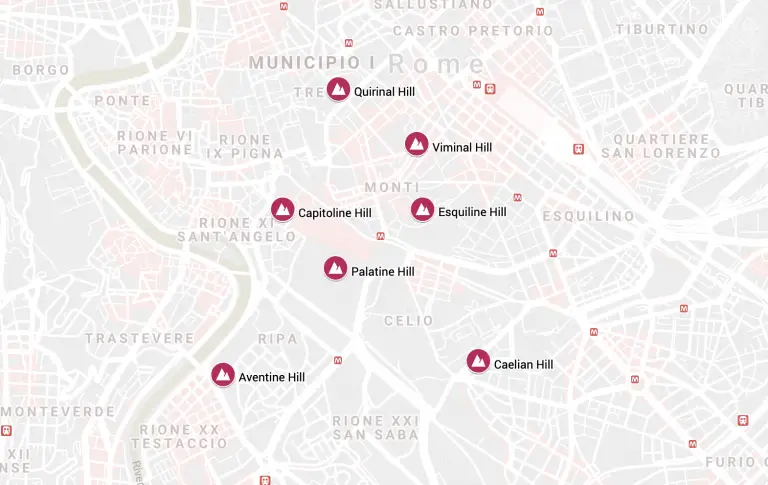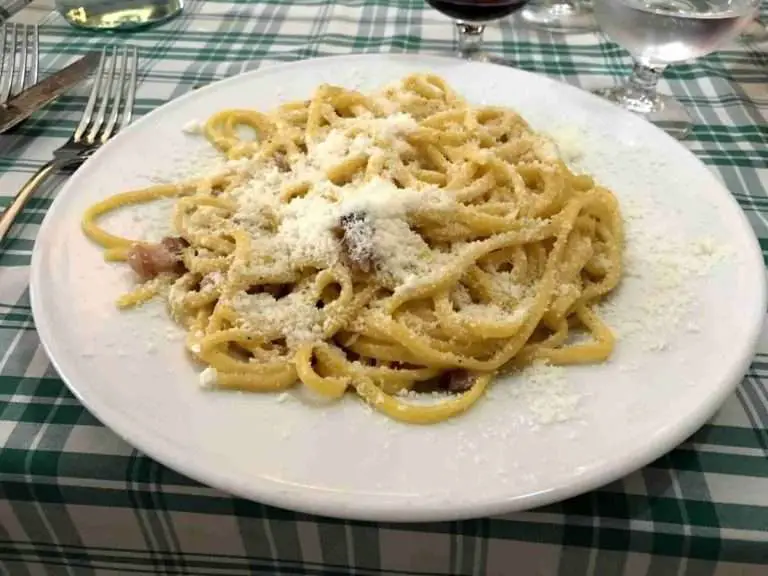
Reflection is part of the prescription for moving from one year into the next. So while I wanted to write a year-end round-up a month ago, I realized that such an article would not fully capture the joys, sorrows, and idiosyncrasies of being an expat resident and traveler in Italy.
Five is an arbitrary number, of course. I’ve learned far more than five lessons learned while living in Rome and traveling throughout Italy. But here are a few of the important ones:
1. Always Make Reservations
You may think you’re only going to this or that little town so you won’t need to book tickets to a museum or reserve a table for lunch. However, you may be surprised to learn that a country that is not known for queuing is very serious about reservations.
Most restaurants only have one seating at lunch and two seatings at dinner. So if you’ve found one that has outstanding reviews, you’d be wise to book. Earlier time slots are usually easier to get, for both lunch and dinner. You can usually book on the same day unless the restaurant is well-known.
Meanwhile, many museums and churches with notable art require visitors to book tickets online. Most of these facilities will not accept online bookings on the same day. For example, make reservations for Rome’s Galleria Borghese, the Basilica di San Francesco in Arezzo, and the Scrovegni Chapel in Padova.
2. Wi-Fi Is A Privilege, Not a Right
As a writer, photographer and expat, I depend on Wi-Fi to publish articles, post photos on Instagram, and keep in touch with friends and family. I know that many others who visit Italy also want to have that live connection while here, too.
The fact that I’m addicted to the Internet has left me feeling ashamed on many occasions. In particular, I remember arriving at my modest, family-run B&B in Capri and asking within the first five minutes what the Wi-Fi password was.
There I was, with an almost endless view of the blue Bay of Naples and I wanted to be online to share the moment rather than let it seep into my memory.
Wi-Fi is available most everywhere in Italy, though it can be very spotty. In some cases, innkeepers will limit the amount of Wi-Fi available. In other cases — on a mountaintop; in a cabin in the woods; in the dungeon of a medieval castle; in a restaurant where the chef wants you to eat and enjoy instead of snapping photos of your meal — you will have neither Wi-Fi nor 4G for broadcasting your whereabouts.
Take it from me — just go with it. Absorb the sights, sounds, and smells. Make mental notes. If you can take photos, take photos and move on.
3. Breaks Are Sacred
By and large, Italians are not impressed with busyness. From the afternoon pausa to summer vacations, breaks are something that Italians cherish.
Breaks and holidays are built into work days and calendars to ensure a better quality of life. Taking a break does not mean you are weak or lazy. It means that you know how to take time for things that matter, such as conversing with friends, spending time with family, and recharging your batteries.
The very essence of “the sweet life” is not how much money or stuff you have but whether you have the time to enjoy what you have.
4. Less Is More
The Japanese store Muji, which has branches in Italy, is not the only place to champion the philosophy of “This will do.” Italy seems to embrace this minimalist philosophy, too — at least in some areas of life.
You won’t see this in Baroque architecture or Renaissance paintings. You also won’t see this in clothing, accessory, and furniture shops, which continually churn out innovations and on-trend must-haves.
But you will see it in everyday cafes, all of which offer limited drink options (coffee, water, a few flavors of juice, the standard aperitivi) and grocery stores, where only a few brands are on offer for each item you may need to buy. You also have to take into account that many bars, delis, cafes, and restaurants have traditionally had to work with less space and a smaller staff. So “less is more” has been a necessity as much as it has been a philosophy.
Some may scoff at this lack of choice. But actually I’ve come to see this as freedom from choice. I don’t need a thousand choices of sugar water or power drinks when I go to a deli. Give me less to think about so I can use that mental energy for more important things.
There’s this sh*tty little plastic cup, disposable and white, that is ubiquitous at parties, pizzerie, beaches, and anywhere that sells beverages. This cup, or bicchiere, has come to symbolize for me the “that will do” attitude. It’s not great but it gets the job done.
That’ll do, bicc’. That’ll do.
5. The More I Learn About Italy the More I Know That I’ve Barely Scraped the Surface
I feel like I have explored every inch of Rome, from the Centro Storico to the outer neighborhoods. I have also taken numerous trips to small towns in Lazio and spent time in nearly every region in Italy.
But every time that I feel like I have really seen this country, I learn about a new village or castle or artwork that I must see, have to see, can’t leave Italy without seeing. This particular point contradicts the one directly above. Because when it comes to getting to know Italy — its culture, its people, its food and art — one is spoiled for choice.
There are nearly 50 “cultural” sites on the UNESCO World Heritage Site list for Italy and four natural ones, with 41 more properties on the tentative list. I haven’t even come close to seeing all of these. And, the thing is, there’s outstanding beauty and intrigue beyond what is pristine enough to be on the UNESCO list.
Tourists come to Italy wanting to “see it all” in two weeks. I don’t even think two lifetimes will suffice, much less two weeks.
2016 marked the five-year anniversary of the Italy Roundtable, a blogging group of which I am proud to be a member even if I don’t always write a post every month.
This post is a make-up post for May, when my colleagues wrote about “five” in honor of our group’s anniversary. Please give them love by clicking and reading these posts:
Jessica – 5 Autonomous Regions of Italy
Gloria – The Tuscan Cinquino
Rebecca – Lake Trasimeno with Kids: Five Suggestions for a Family-Friendly Visit
Michelle – 5 Things No One Told You About Moving to Rural Italy
I’d also like to invite you to read other posts that involve the number five. Check out Five Favorites, an occasional featured column on Italofile.
Last updated on May 17th, 2023
Post first published on January 25, 2017







